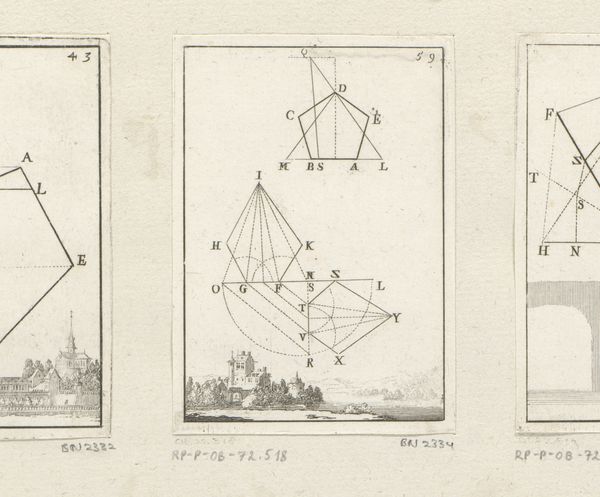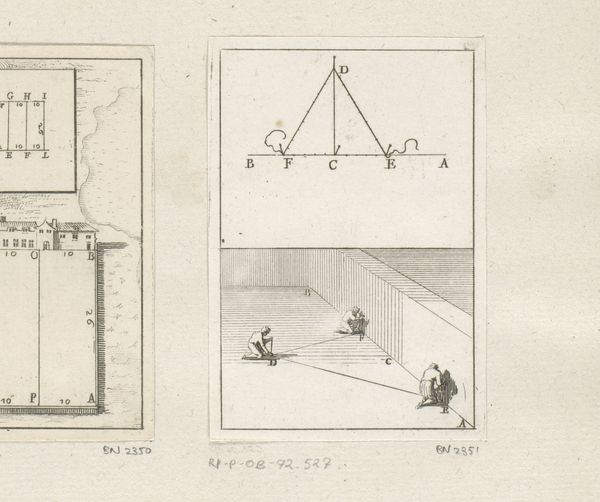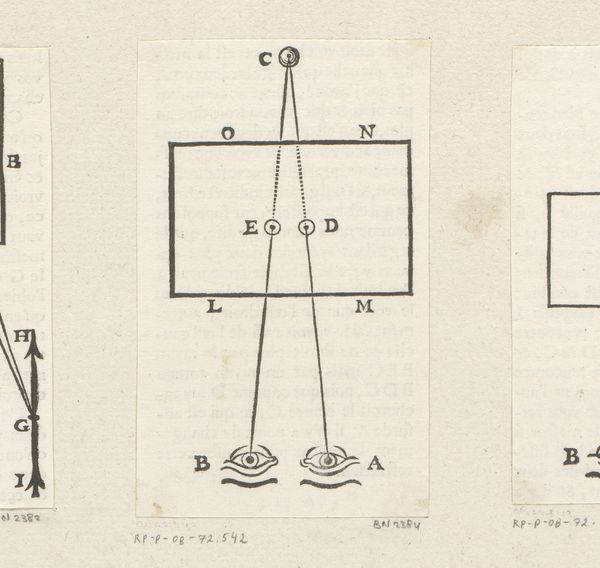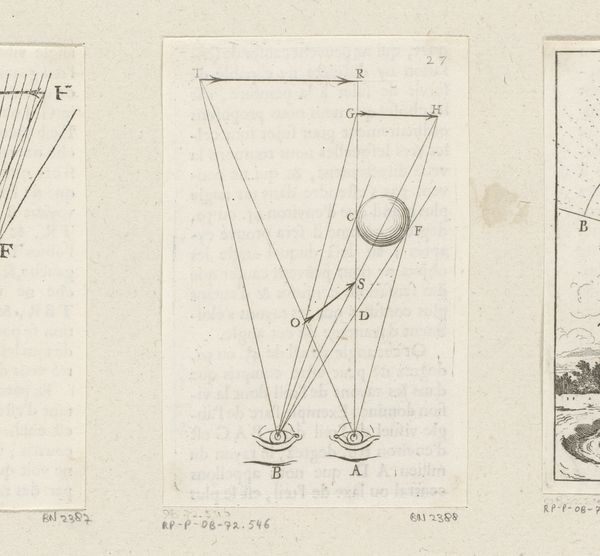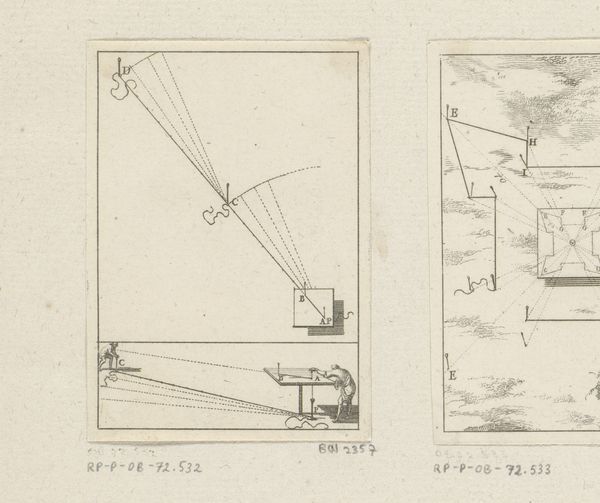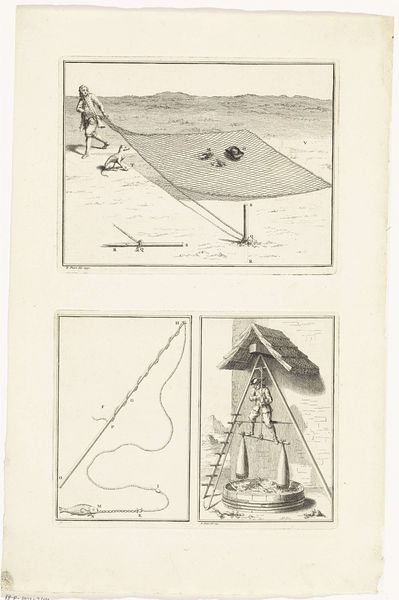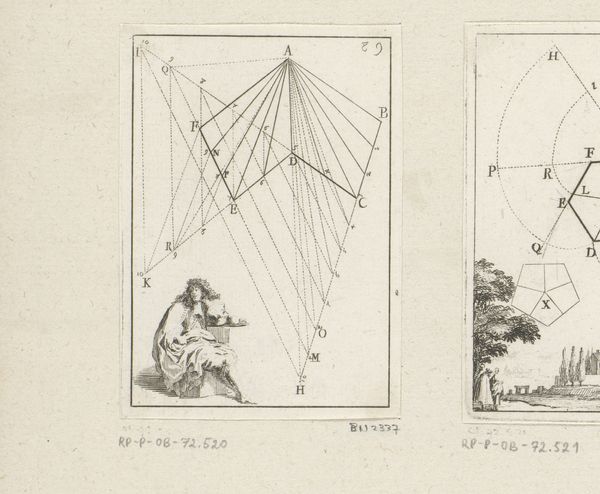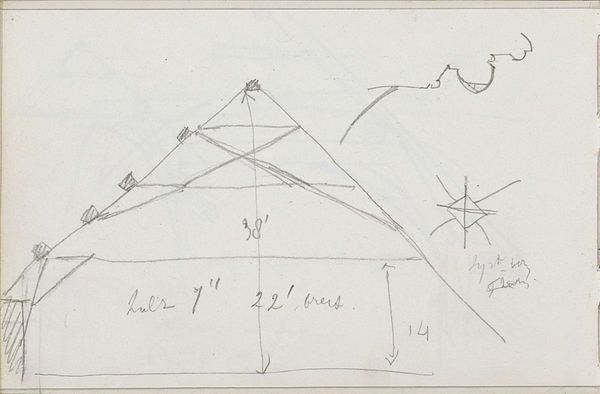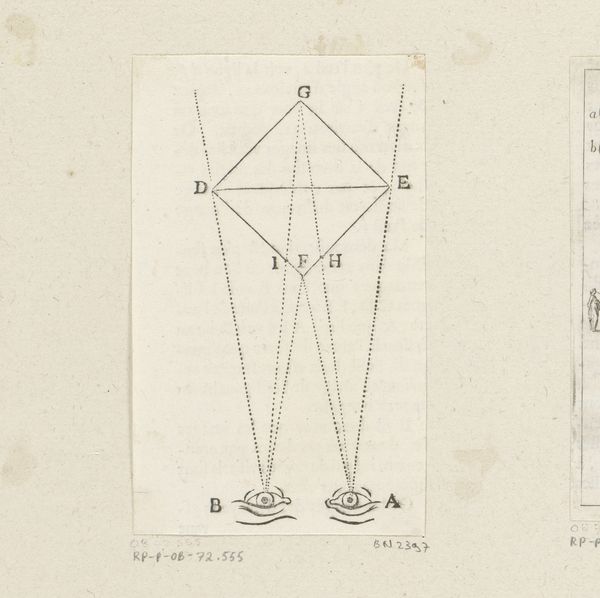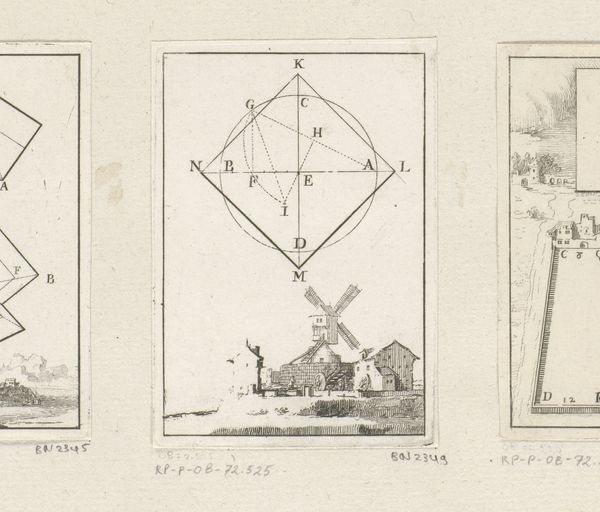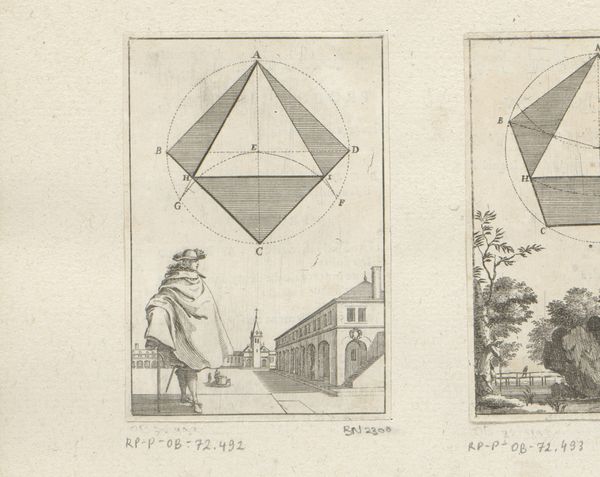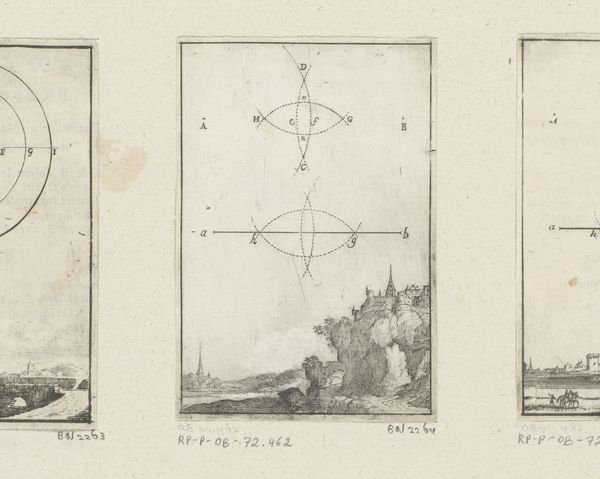
drawing, print, engraving, architecture
#
drawing
#
baroque
# print
#
geometric
#
line
#
cityscape
#
engraving
#
architecture
Dimensions: height 94 mm, width 65 mm
Copyright: Rijks Museum: Open Domain
Curator: Here we have "Laying Out a Triangle According to a Given Example" by Sébastien Leclerc I, created in 1669. It's an engraving on paper, held in the Rijksmuseum. Editor: At first glance, I find the precise lines and calculated composition quite striking. It almost feels like a deconstruction of landscape into pure, geometric form. Curator: Indeed. Leclerc was a member of the French Royal Academy of Painting and Sculpture, so the Academy shaped his art practice. This print reflects the 17th-century fascination with geometry and its practical applications, especially in engineering and military architecture. Editor: That context helps me read the image. The surveying figures embedded within the landscape speak volumes about humankind’s desire to impose order upon the world, to control space through the application of rational principles. I read an analogy for colonial or expansionist ideology at play here. Curator: That’s a provocative interpretation. Certainly, geometry had military implications at the time. Think of fortifying cities; geometric precision could literally be a matter of life and death for a state and its people. But the image might also represent knowledge production; geometry represented truth and accuracy. Editor: Knowledge production never exists in a vacuum, though. These precise lines demarcate ownership, borders, control. What's shown above in the abstracted triangular form is put into real-world use for domination, as the image makes visible. Look at the tiny people setting the points to that geometric plan in an empty landscape. The act is anything but neutral. Curator: Of course, and the development of perspective was incredibly important in mapping, which changed not only spatial representation, but power as well. We see here a tangible vision of Enlightenment ideals and the burgeoning scientific revolution that impacted many different groups of people differently. Editor: Right. By placing this diagram within a real-world setting, Leclerc implicitly connects abstract theories of geometry to concrete realities, raising questions about the human implications of intellectual and scientific advancement and underscoring the politics that even math carries with it. Curator: It provides a vivid example of art embedded within social and intellectual trends. It invites us to look at not just the pretty drawings, but the period during which these images arose. Editor: Exactly, the intersections of art, politics, science and history—illuminating hidden narratives, one triangle at a time.
Comments
No comments
Be the first to comment and join the conversation on the ultimate creative platform.
